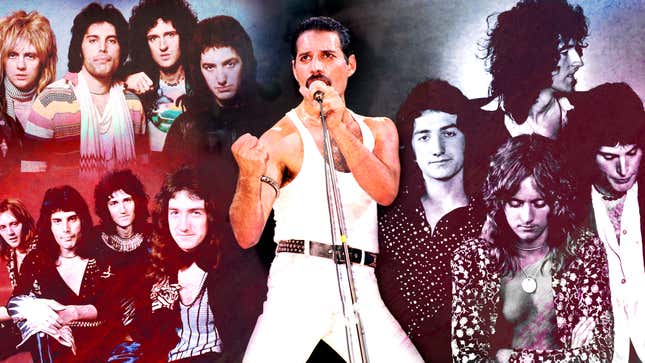
Fifty years after the release of their eponymous debut album, Queen retains a space near the epicenter of pop culture. It’s not just that guitarist Brian May and drummer Roger Taylor are preparing to bring vocalist Adam Lambert out for another Queen tour this fall, nor is their revived role due to 2018’s Academy Award-winning film Bohemian Rhapsody, which won Rami Malek an Oscar for his portrayal of Queen’s late singer Freddie Mercury. It’s that Queen’s outsized, outrageous glam rock remains part of the fabric of modern music, informing both rock survivors and wannabe pop idols alike.
A half-century of hindsight makes Queen’s unique qualities all the more notable. Their influences were evident—it’s difficult to imagine the group without either Led Zeppelin or the Beatles’ Abbey Road—but the band’s four forceful personalities combined in increasingly idiosyncratic ways over the course of their career. Queen was the only band where each member wrote smash hits in their own right, with May, Mercury, Taylor, and bassist John Deacon all developing complementary songwriting styles and embellishing their bandmates’ compositions with distinctive flair. Their fluid collaboration is evident throughout the following list of 40 songs which run the gamut from earnest balladry to crunching hard rock, while finding space for disco, high camp, new wave, and AM pop—a range that only Queen could deliver.